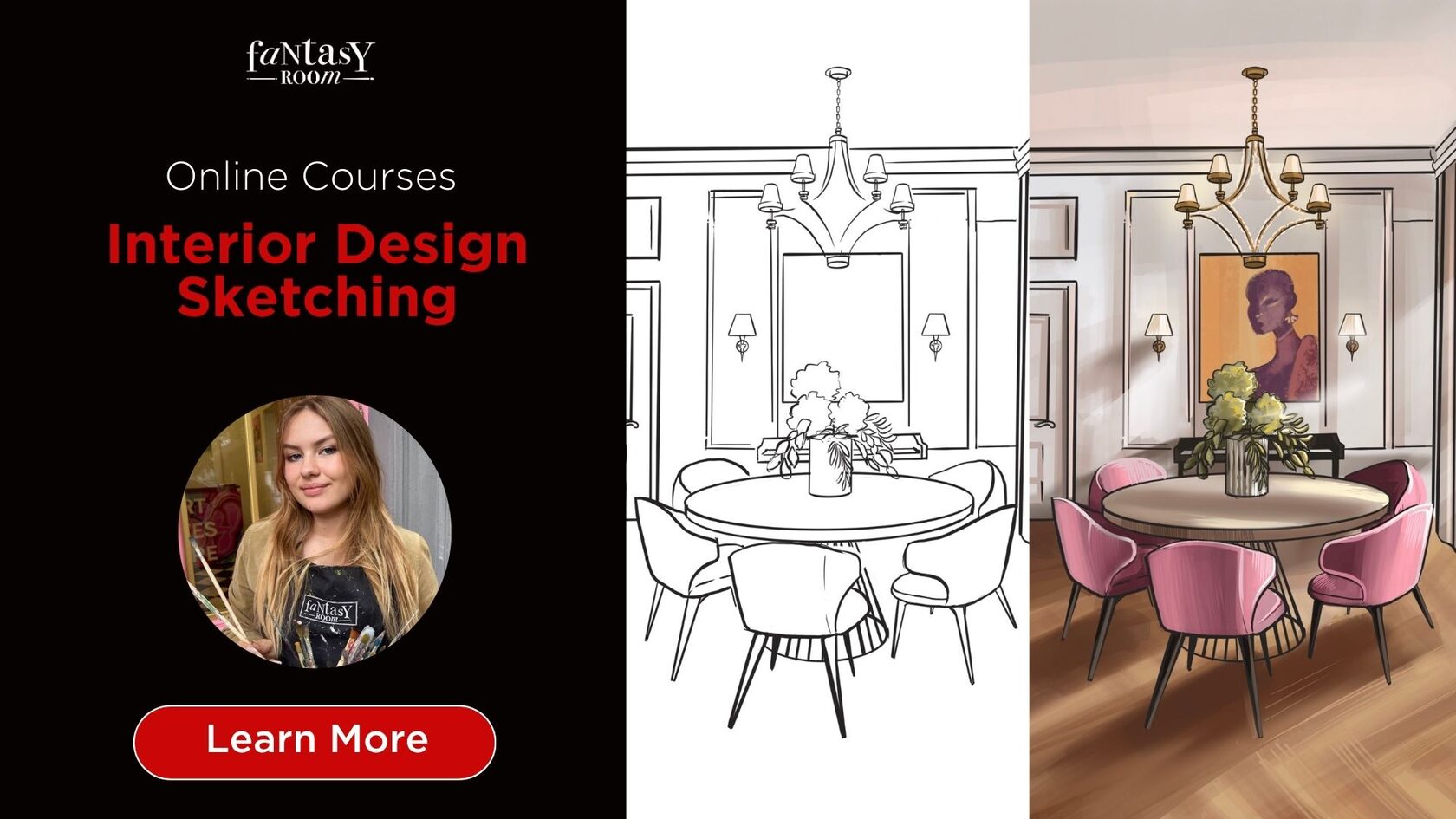Like many industries, automation and technology have revolutionized interior design practices. Where once drafting boards and scale rulers were the norm, today's designers often visualize spaces as photorealistic renderings using 3D software. Undoubtedly, these tools are invaluable in the conception and translation of interior design ideas, benefiting designers immensely.
However, the evolution of ideas is a dynamic process that unfolds rapidly. While digital tools excel in many aspects, sketching with pen and paper retains its indispensable role in exploring concepts and communicating ideas effectively.
Each designer possesses a unique style, both in design and sketching technique. There's no definitive right or wrong approach to what, where, or how we sketch. Sketching is deeply personal, intimately connected with how our minds process ideas, encompassing shape, form, and materiality. Factors such as project, location, and client influence the development of ideas, guiding us along the path of exploration.
Understanding the information that needs to be conveyed guides our creative journey, ensuring that our sketches effectively communicate our vision and capture the essence of the design concept.
However, the evolution of ideas is a dynamic process that unfolds rapidly. While digital tools excel in many aspects, sketching with pen and paper retains its indispensable role in exploring concepts and communicating ideas effectively.
Each designer possesses a unique style, both in design and sketching technique. There's no definitive right or wrong approach to what, where, or how we sketch. Sketching is deeply personal, intimately connected with how our minds process ideas, encompassing shape, form, and materiality. Factors such as project, location, and client influence the development of ideas, guiding us along the path of exploration.
Understanding the information that needs to be conveyed guides our creative journey, ensuring that our sketches effectively communicate our vision and capture the essence of the design concept.
The Significance of Sketching in Interior Design
Architects and interior designers commonly provide clients with 2D drawings, but without accompanying sketches, the symbolic language used in architectural plans can be prone to misunderstanding. Details such as wall indentations, window proportions, or the representation of an atrium with dotted crosses can be misinterpreted. While some may suggest clarifications during in-person meetings, this isn't always feasible, especially if clients are located remotely.
In such cases, emailing hand-rendered sketches alongside 2D plans can significantly aid clients in understanding the drawings. These sketches provide visual context, making it easier for clients to interpret the spatial layout and design elements depicted in the 2D plans.
So why sketching is important?
In such cases, emailing hand-rendered sketches alongside 2D plans can significantly aid clients in understanding the drawings. These sketches provide visual context, making it easier for clients to interpret the spatial layout and design elements depicted in the 2D plans.
So why sketching is important?
Creative Exploration
Sketching allows designers to freely explore ideas and concepts in a fluid and intuitive manner. It serves as a medium for brainstorming and experimenting with various design possibilities without the constraints of digital tools or software.

Embark on a journey to master the art of interior sketching with us! Whether you prefer traditional manual techniques or the versatility of Procreate on the iPad, our expert guidance will lead you through the process with precision and style.
Discover the principles of perspective drawing, from one-point to two-point variations, and learn to infuse your sketches with depth and dimension. Dive into floor planning as we explore drawing various types of rooms, including living rooms, bedrooms, kitchens, bathrooms, hallways, and dining rooms. Join us and unleash your creativity as you hone your interior sketching skills to perfection!
Discover the principles of perspective drawing, from one-point to two-point variations, and learn to infuse your sketches with depth and dimension. Dive into floor planning as we explore drawing various types of rooms, including living rooms, bedrooms, kitchens, bathrooms, hallways, and dining rooms. Join us and unleash your creativity as you hone your interior sketching skills to perfection!
Visualization
Sketching enables designers to visualize their ideas quickly and efficiently. By sketching by hand, designers can rapidly translate their thoughts into visual representations, helping them to better understand spatial relationships, proportions, and compositions.

Communication
Hand sketches serve as a universal language in the design process, facilitating communication between designers, clients, and other stakeholders. Sketches effectively convey design concepts and intentions in a clear and understandable manner, fostering collaboration and ensuring that everyone involved in the project shares a common vision.
Client Engagement
Hand-drawn sketches possess a unique charm and authenticity that digital renderings often lack. Presenting sketches to clients can evoke a sense of excitement and engagement, as they are able to see the designer's vision come to life in a tangible and personalized way. Clients may also feel more involved in the design process when presented with sketches, leading to increased satisfaction and a stronger sense of ownership over the final design.
Flexibility and Adaptability
Sketching offers designers flexibility and adaptability throughout the design process. Unlike digital tools, which may require time-consuming adjustments and revisions, sketches can be easily modified on the fly, allowing designers to quickly iterate on ideas and respond to feedback in real-time.

In conclusion, the importance of sketching in interior design cannot be overstated. Beyond its practical applications in visualizing concepts and communicating ideas, sketching serves as a conduit for creativity and innovation. It empowers designers to explore possibilities, solve problems, and infuse their designs with a personal touch. As technology continues to evolve, the timeless art of sketching remains an indispensable tool, anchoring the design process and elevating the profession of interior design to new heights.











